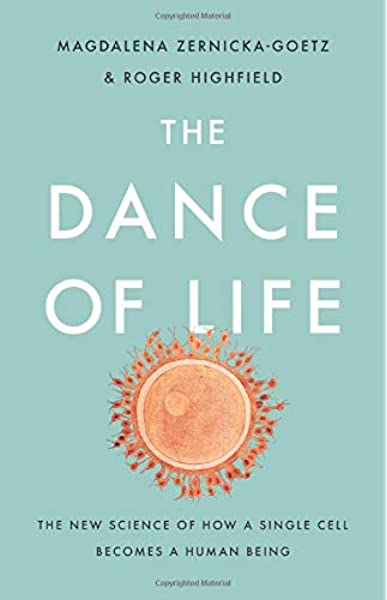
As we discussed last week, The Dance of Life by Magdalena Zernicka-Goetz and Roger Highfield is a story of developmental biology research. It is also a story of motherhood, including the specific joys and anxieties of prenatal motherhood. Meanwhile, my church has chosen Luke 1-2 for its Advent texts, and Luke’s Gospel pays more attention to the prenatal experience of Mary and her cousin Elizabeth than the other accounts. I don’t want to over-theologize Zernicka-Goetz and Highfield’s book and I don’t think it is any sort of parable or modern day nativity. But reading it alongside the early chapters of Luke makes it hard to ignore the rhymes arising from features common to human experience.
Some popular science books have a memoir component, typically centered around career milestones or a-day-in-the-lab anecdotes. The Dance of Life gets more personal than most, as Magdalena Zernicka-Goetz shares details from the pregnancy with her second child. A screen of placental cells revealed a significant chromosomal abnormality. Already well into a career of researching the early stages of development, Zernicka-Goetz was better equipped than almost anyone to understand the multiple scenarios which could lead to that finding, and the wide range of implications they presented for her child. At the same time, she knew better than most which questions science did not have answers to. And while it would take a decade to get results, she reorganized her research program to answer some of them to help other parents facing similar situations.
That screening was indicated because Zernicka-Goetz was pregnant at an age that is young for a human while considered obstetrically venerable. Similarly, Luke records that Elizabeth was an outlier among expectant mothers while being discrete about any exact numbers. While Elizabeth obviously couldn’t get genetic tests or ultrasounds, it is not hard to imagine her pregnancy came with its own set of questions and worries. And her cousin Mary likely had a whole different set of questions, prompted by her supernatural notification that she should expect to be expecting. Luke gives us a brief summary of their circumstances and a glimpse into Mary’s mindset via the Magnificat. Magdalena Zernicka-Goetz shares in more detail her own emotions and thought process during an experience that is different in many particulars yet focused on developing empathy for a common arc of many pregnancies.
I realize those connections may seem a bit thin. Frankly, had the timing been different I might never had made the connection. But reading the book so closely to reflecting on Elizabeth and Mary’s experiences, and not having any personal experience as an expectant mother, I appreciated the opportunity Magdalena Zernicka-Goetz offered to gain even a little more appreciation for what she went through and what many other women have gone through as well. And since she asked the kinds of questions a biologist would, I found it easier to connect with her perspective. Your mileage may vary, but it has enriched my engagement with the very familiar Christmas texts this year.
Andy has worn many hats in his life. He knows this is a dreadfully clichéd notion, but since it is also literally true he uses it anyway. Among his current metaphorical hats: husband of one wife, father of two teenagers, reader of science fiction and science fact, enthusiast of contemporary symphonic music, and chief science officer. Previous metaphorical hats include: comp bio postdoc, molecular biology grad student, InterVarsity chapter president (that one came with a literal hat), music store clerk, house painter, and mosquito trapper. Among his more unique literal hats: British bobby, captain’s hats (of varying levels of authenticity) of several specific vessels, a deerstalker from 221B Baker St, and a railroad engineer’s cap. His monthly Science in Review is drawn from his weekly Science Corner posts — Wednesdays, 8am (Eastern) on the Emerging Scholars Network Blog. His book Faith across the Multiverse is available from Hendrickson.

Leave a Reply